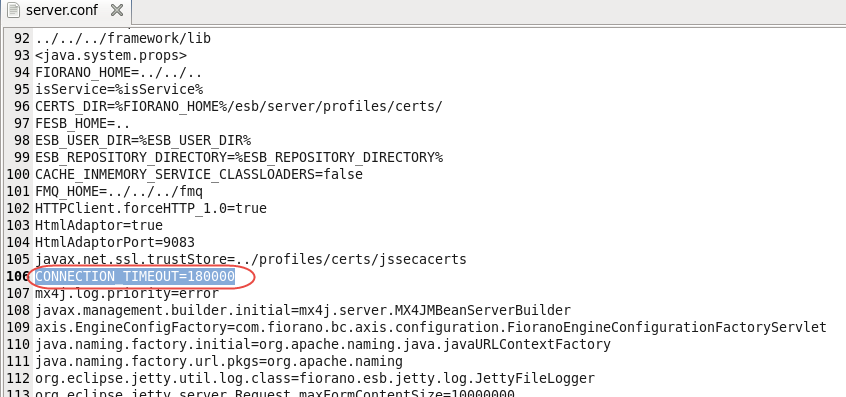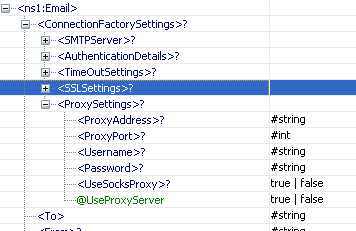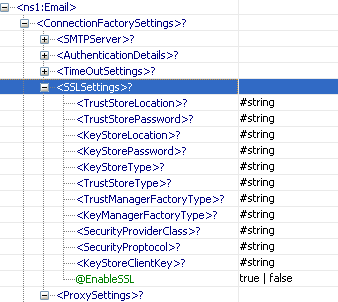| Expand | ||||||||
|---|---|---|---|---|---|---|---|---|
| ||||||||
|
This section illustrates the configurations that are common across most of the adapters. However, if there are any additional component-specific details which are not described here, such details can be found in the respective component help file.
...
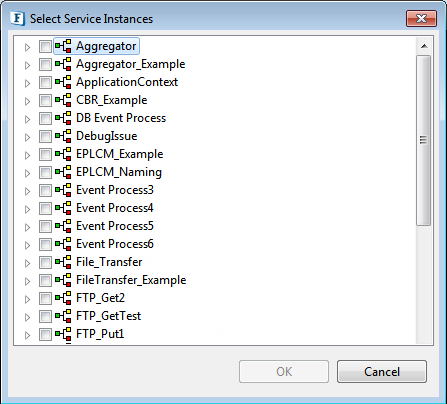
Figure 11: Select Service Instances
Configuring Connection Timeout
In microservices such as FTPGet, FTPPut, and FileReader, an input/output operation may get hung for indefinite time waiting for a request to return due to various reasons such as network fluctuations of the mounted directory. To avoid such waiting time, it is recommended to configure Connection Timeout in the runtime arguments. This is done by adding a property "-DCONNECTION_TIMEOUT" with the value (in milliseconds) as per requirement in Runtime Arguments in the Properties pane.
To configure Connection Timeout,
- Click the microservice present on the orchestrator editor.
In the Properties pane, click the Runtime Arguments tab and append the following values in the JVM_PARAMS text area:
Code Block title Append to the JVM_PARAMS values language actionscript3 -DCONNECTION_TIMEOUT=3000
Figure 12: Configuring the runtime arguments by editing the JVM_PARAMS value to manage memory- Press Enter to save the configuration and click the option "No" or "Yes" to update this configuration only to the current service instance alone or for all event process respectively.
| Info |
|---|
After configuring Connection Timeout as above, the maximum time that the component waits for execution of each file will be 3000 milliseconds (3 seconds). If a CONNECTION_ERROR is thrown while the request is expecting to read N number of files, then the execution of all the remaining files for that request will be discarded. Once the CONNECTION_ERROR has occurred, the next request from the input port is processed in sequential order. |
| Note |
|---|
If an error occurs while configuring -DCONNECTION_TIMEOUT in runtime arguments, then the microservice takes the default value 180000 milliseconds (3 minutes). For example, if -DCONNECTION_TIMEOUT is set to an empty value or if it throws NumberFormatException due to a typing error like "_DCONNECTION_TIMEOUT=30)0", then this default value is taken. |
| Tip |
|---|
When configuring the timeout, the component takes the value from different locations in different Launch Modes as below:
|
| Anchor | ||||
|---|---|---|---|---|
|
...
Input port properties appear in the Properties pane when the input port of a component instance is selected.
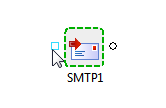
Figure 1214: Input Port properties selected/highlighted
...
| Anchor | ||||
|---|---|---|---|---|
|
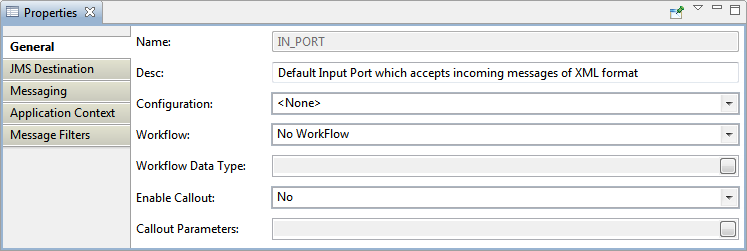
Figure 1315: Input port General properties for a sample component instance
...
| Note |
|---|
|
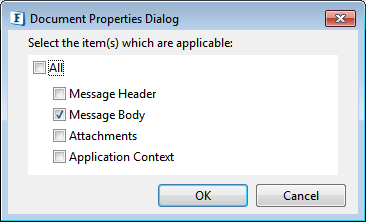
Figure 1416: Dialog box to choose Work Data Type
Please refer refer to Document Tracking for more information.
...
Specifies DB callout parameter types for the workflow.
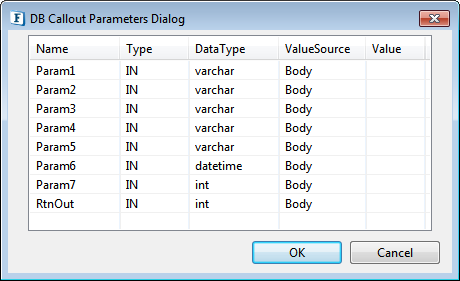
Figure 1517: Execution properties under Property panel
...
This group contains properties related to destinations created for the ports of the component.
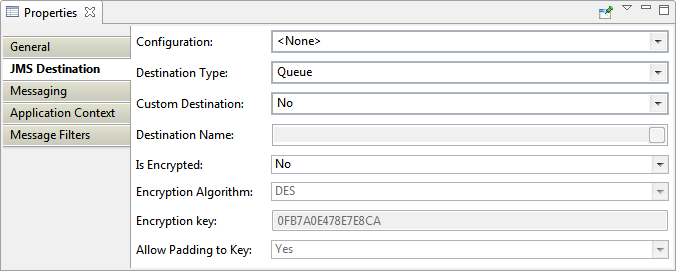
Figure 1618: Execution properties in the Input Port Properties panel
...
Specifies whether the destination for the port is 'Queue' or 'Topic'. Visual representation of port is changed based on the type of the destination as shown below. Square shape indicates a Queue and a circle indicates a Topic.
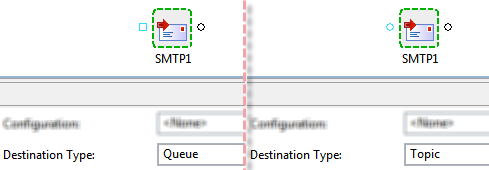
Figure 1719: Input port as queue and as topic
...
This group contains properties related to JMS messaging concepts. In general, pre-built components provided by Fiorano use a single connection and share the same session for reading messages in the input port and sending messages to the output port.
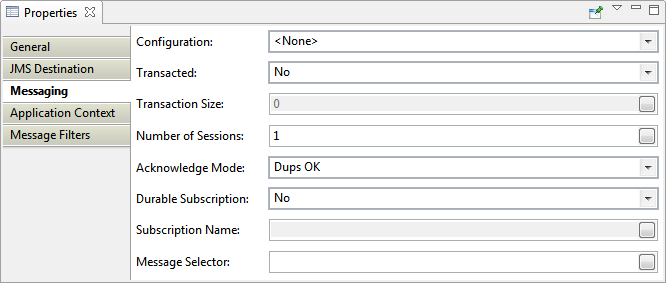
Figure 1820: Messaging properties in the Input Port Properties panel
...
Helps to manage the Application Context that is configured for the application / Event Process.

Figure 1921: Application Context properties in the Input Port Properties panel
...
Messages can be filtered by providing a specific name and value to it under the Name and Value columns respectively.

Figure 2022: Message Filters properties in the Input Port Properties panel
...
Output port properties appear in the Properties pane when an output of a component instance is selected.
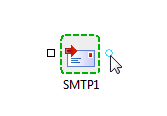
Figure 2123: Output port properties selected/highlighted
...
| Anchor | ||||
|---|---|---|---|---|
|
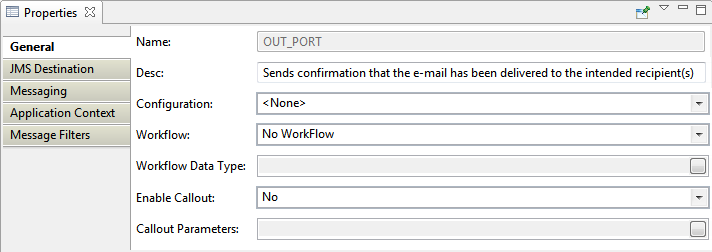
Figure 2224: Output port General properties for a sample component instance
...
| Anchor | ||||
|---|---|---|---|---|
|

Figure 2325: Messaging properties in the Output Port Properties panel
...
In the Output Port Application Context, you have an option to choose the Component Instance from the Configuration drop-down if it was saved after creating the Application Context. Rest of the options are the same as in Input Port properties.

Figure 2426: Application Context properties in the Output Port Properties panel
...
Defines the connection pool settings for the component. Creating a connection to external systems like Database or FTP Server or HTTP Server is typically a resource extensive and time-consuming process. Configuring a connection pool reduces the overhead of creating a connection on each request.
Click the ellipsis button  to launch an editor to configure connection pool parameters as shown in the figure below.
to launch an editor to configure connection pool parameters as shown in the figure below.
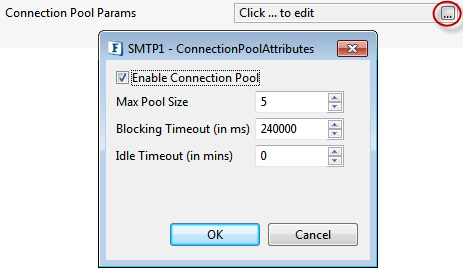
Figure 2527: Connection pool configurations
...
Click the ellipses button ![]() to launch an editor to configure proxy configurations as shown below.
to launch an editor to configure proxy configurations as shown below.
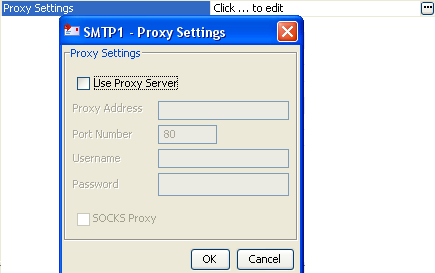
Figure 2628: Proxy configurations
Use Proxy Server
...
| Info |
|---|
When the property Use Connection details from input is chosen, an element ProxySettings will be added to the schema of the input port of the component as shown in the figure below to provide the proxy details in the input message.
|
...
Click the SSL Security ellipsis button  to launch the editor to set SSL configurations.
to launch the editor to set SSL configurations.
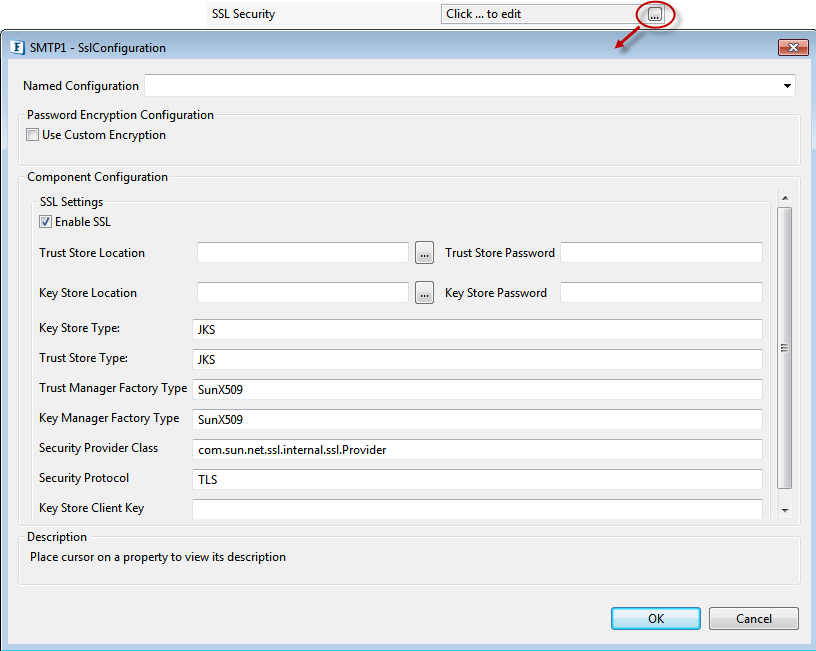
Figure 2830: SSL configurations
| Anchor | ||||
|---|---|---|---|---|
|
...
| Info |
|---|
|
...
| Anchor | ||||
|---|---|---|---|---|
|
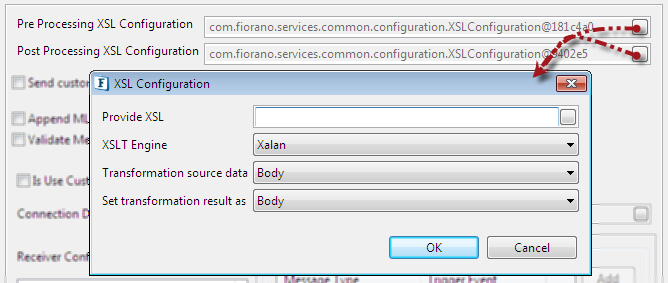
Figure 3032: Pre/Post Processing XSL Configuration properties
...
When this property is chosen as 'other' along with Transformer factory class property, it determines the transformer implementation that should be used to perform the transformation.

Figure 3133: XSLT Engine properties
Xalan (2.7.0) and Saxon (8.4) transformer implementations are bundled with Fiorano environment for performing transformations.
...
This property is used to apply transformation source to a particular part of the input message.

Figure 3234: Transformation source data properties
...
This property is used to set transformation result to a particular part of the output message.

Figure 3335: Set transformation result as properties
...
The property helps components to skip certain messages from processing.

Figure 3436: Process Message Based On a Property settings
...
In an Event Process that is configured to listen for multiple types of HL7 messages using WSStub microservice, which forwards them using different protocols based on the HL7 message type and inserts it into database, only the forward action is successful. Generally, parallel flows are defined for each HL7 message type, route selectors used to identify the flow and thereby message is sent out of the parallel flow to the DB component.
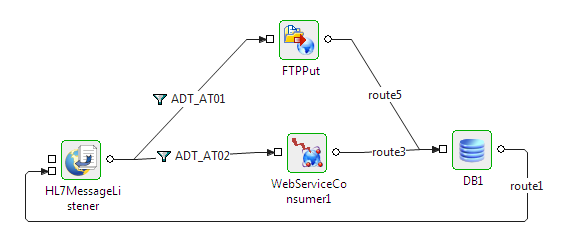
Figure 3537: Event Process composed as a normal parallel flow
It is difficult to maintain order at the DB component input port in above flow. To maintain the order, process all the messages sequentially as shown in the figure below and configure the Process Message Based on Property based on the HL7 message type; only the required components will process, others just forward the message to its output port.

Figure 3638: Event Process composed with the property enabled in the HL7 microservice
| Anchor | ||||
|---|---|---|---|---|
|

Figure 3739: Common configurations in Interaction Spec panel
...
Click the ellipsis button  to launch an editor to configure Monitoring configuration.
to launch an editor to configure Monitoring configuration.

Figure 3840: Monitoring configurations in Interaction Spec panel
...
- Open Profile Management and go to FES under Profiles.
- Navigate to FES > Fiorano > Esb > Events.
- Click FESEventsManager to open the Properties of FESEventsManager window on the right side.
Under ComponentInstance Configuration section, select the ListenForUserEvents checkbox.
Note Ensure that the Server is stopped to make the above changes.
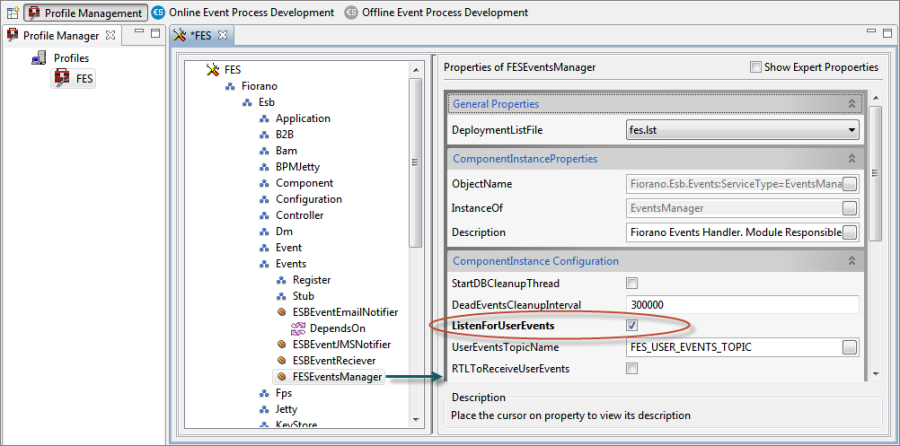
Figure 3941: Enabling Dashboard Monitoring option through eStudio
...
- Go to Advanced Properties property under Advanced Properties tab present in the Navigation Panel.
- In the Configure Advanced Property window, expand Enterprise Server>Events Manager.
- Under Action column, click the Change button corresponding to the Attribute Name: ListenForUserEvents.
- Change the value to "true" from the ListenForUserEvents drop-down and click OK.
- Click Save Configuration button in the Save Changes dialog box and notice the change in the Attribute Value parameter.
- Restart Server to bring the changes into effect.
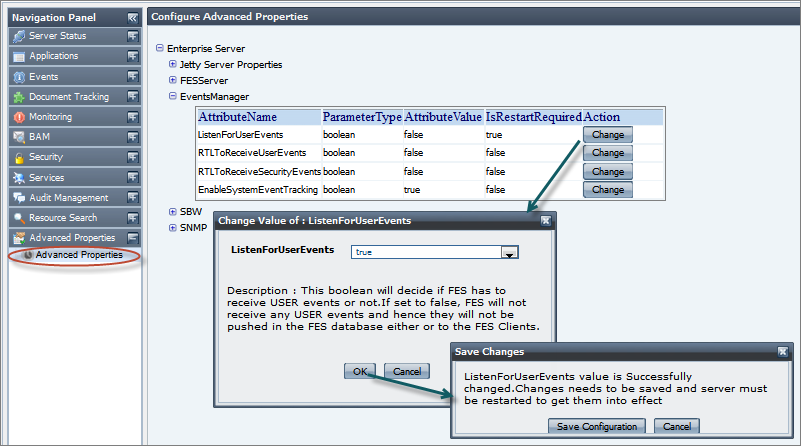
Figure 4042: Enabling Dashboard Monitoring option through Dashboard
...
Click the Threadpool Configuration ellipses button to configure the Threadpool Configuration properties.
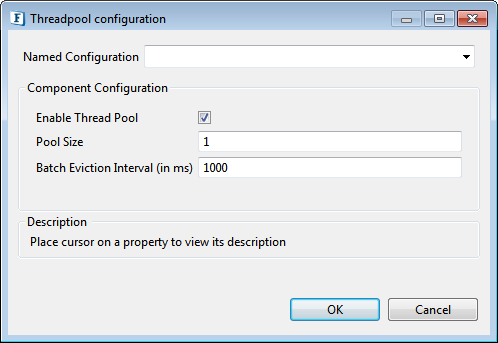
Figure 4143: Threadpool Configuration properties
...
A component can be scheduled to execute a specific request at configured intervals of time. When the component is configured to run in Scheduler mode, the component will not have input port (separate input need not be sent to the component in order to send message). However, messaging properties that are usually configured on the input port can be configured in Transport Configurations panel.
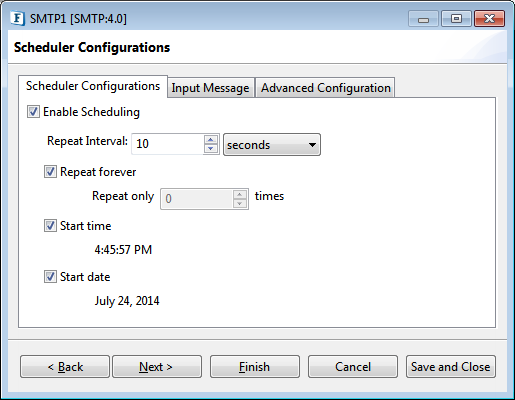
Figure 4244: Scheduler configurations panel
...
The polling start date. If the specified start date is earlier than the component start date, then it will be ignored and input messages are sent at next scheduled date.
Input Message
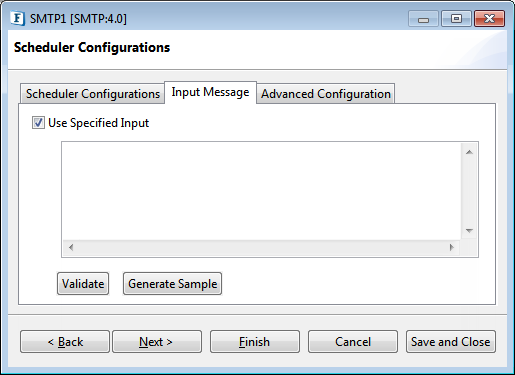
Figure 4345: Input Message tab in the Scheduler Configurations panel
...
Advanced scheduling information can be configured in the Scheduler Configuration panel.

Figure 4446: Advanced Scheduling configuration
...
Click the button against the property to specify the dates in the Editor. Dates moved to the Included Entries section are considered as the scheduled dates.
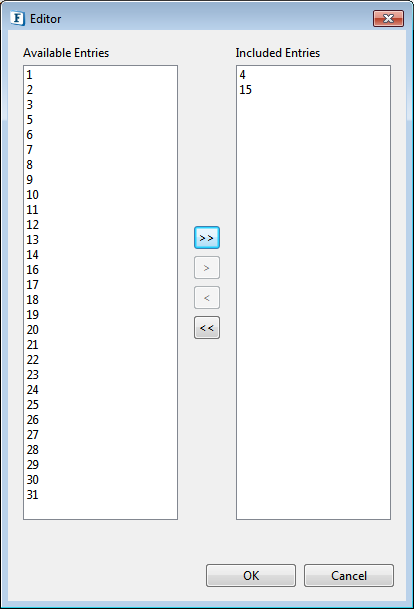
Figure 4547: Editor to provide Scheduled Dates In Month
Scheduled days in week (Schedule Type - WEEKLY)
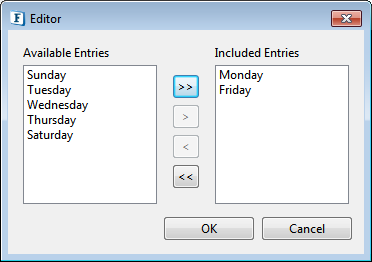
Figure 4648: Editor to provide Scheduled days in week
...
After selecting the Enable Scheduling check box in the Scheduler Configuration panel, click Next to configure Transport properties in Transport Configurations panel.
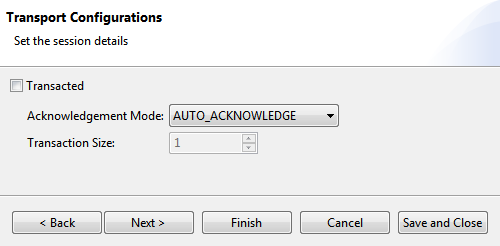
Figure 4749: Transport configurations panel
...
| Note |
|---|
Some of the panels or actions are not available for some components and hence are not visible in those components. |

Figure 4850: Error handling
| Anchor | ||||
|---|---|---|---|---|
|
...
Example: Trying to connect to an external web site when the network connection is not active.
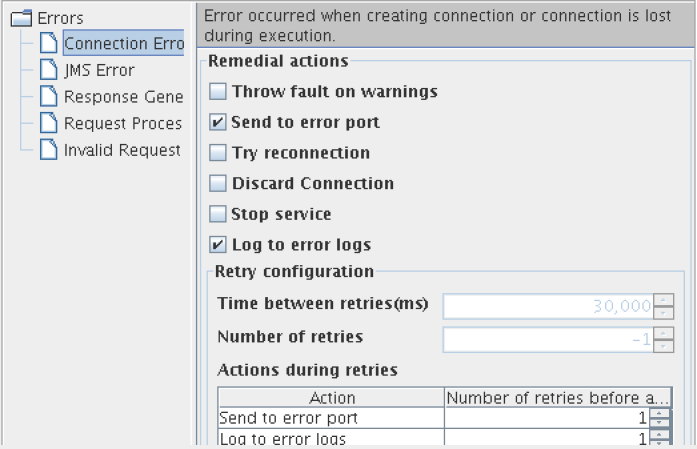
Figure 4951: Available actions for Connection Error category
...
- Try reconnection: The component will re-execute the input request with a new connection, if this action is enabled. The number of times it should try and the time interval between two successive retries can be configured in Advanced Setting Panel of this panel. Configuring for retries is explained in Retry Configuration section.
Discard Connection: The component removes the connection from the connection pool as soon as a connection error occurs. If the processing of input request fails due to connection error then component will discard that connection object. The component will try with another connection object from the connection pool, if there are no connections in the connection pool then the component will create a new connection, and this connection is used to process the input request.
Note If the Try reconnection property is not set, then this property will be ignored.
Stop Service: The component is stopped when an error occurs if this action is enabled.
...
Errors that occur in transport (JMS)
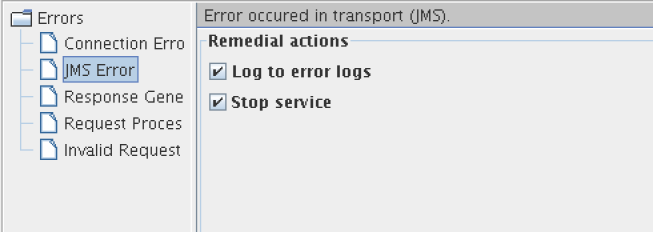
Figure 5052: Available actions for JMS Error category
...
Errors that occur while building a response for the processed request.

Figure 5153: Available actions for Response Generation Error category
...
Example: In case of FTPGet, a Request Processing Error occurs when the specified file (to be downloaded) in the input request is not present in FTP Server.
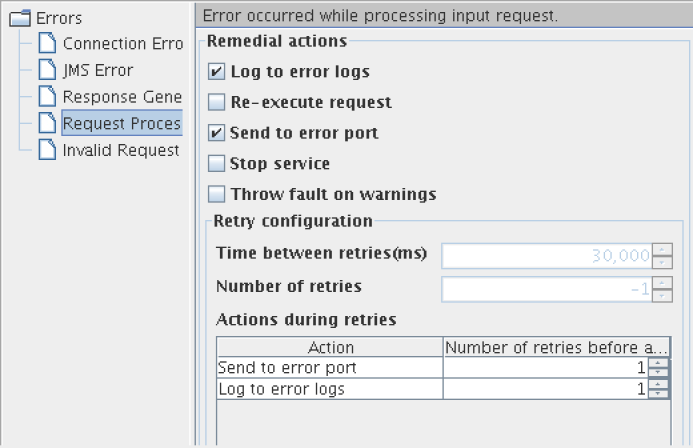
Figure 5254: Available actions for Request Processing Error category
...
Errors that occur when parsing the input request are categorized under Invalid Request Error. Remedial actions are different for EDBC and BC components.
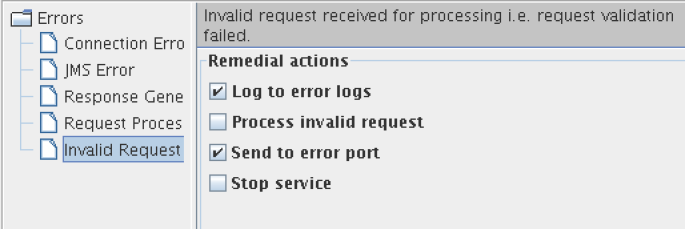
Figure 5355: Available actions for Invalid Request Error category
...
| Anchor | ||||
|---|---|---|---|---|
|
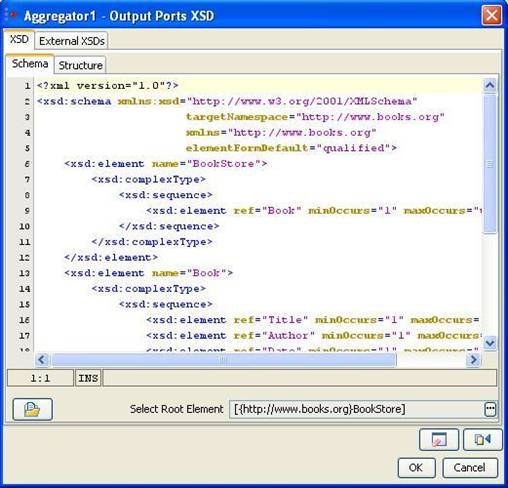
Figure 5456: Schema Editor
Schema Editor is used to configure schemas that are required for the functionality of a component.
In general,
...
Root element can be selected by clicking on Select Root Element button ![]() . A list containing all the elements present in the schema will be displayed as shown in Figure 49. A root element (multiple root elements, in some cases) should be selected from that list of elements. The selected root element(s) will be displayed in the schema editor next to Select Root Element text.
. A list containing all the elements present in the schema will be displayed as shown in Figure 49. A root element (multiple root elements, in some cases) should be selected from that list of elements. The selected root element(s) will be displayed in the schema editor next to Select Root Element text.
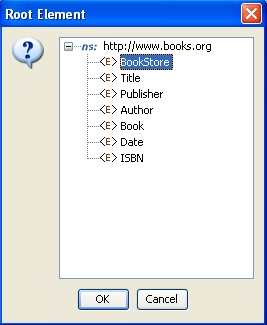
Figure 5557: Selection of root element
...
The structure tab displays a tree structure of the schema provided as shown below. The structure depends on root element.
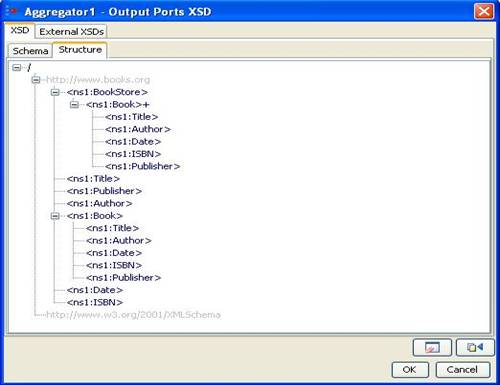
Figure 5658: Structure of the schema when no Root Element is chosen
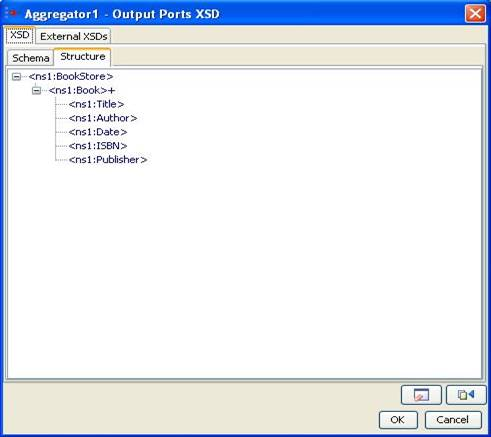
Figure 5759: Structure of the schema when Bookstore is chosen as Root Element
...
Click the Add button to add the external schema. Select an option from Manual or Load from File.

Figure 5860: Adding external schema
- Manual - The text editor on the right is editable only when Manual option is selected. The schema has to be provided manually in the text editor.
- Load from File - Opens a File Chooser to browse the required external schema.
...
To remove a schema, select the corresponding namespace and click Remove button ![]() .
.
To view a schema, select the corresponding namespace and the schema can be viewed in the text editor.
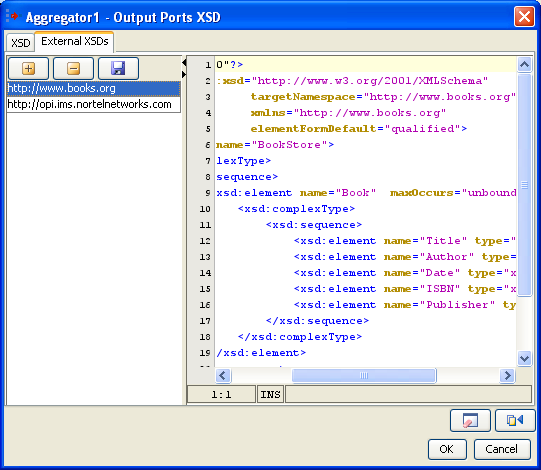
Figure 5961: Configuring external schema
...
On clicking Clear button, the schema, external schemas, root element and structure present in the schema editor will be cleared.
Fetch from Connected Source ![]()
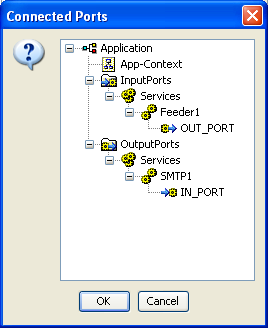
Figure 6062: List of connected ports from which schema should be fetched
...
- In Studio, navigate to Tools > Schema Repository. This opens a Schema Repository editor using which schemas can be added to schema repository.

Figure 6163: Schema repository editor - Click the Add Button to add schemas to the repository, Customize Add... editor.
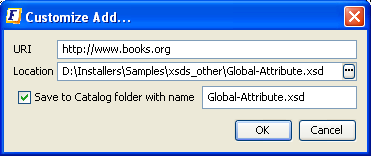
Figure 6264: Adding XSD to the schema repository - Click the ellipsis button
 to browse the required XSD.
to browse the required XSD. - Select an XSD and click OK
The values URI, Location, schema name will be automatically updated.- The URI value should not be an empty field. In case, if the schema has a target namespace, URI should be same as the target namespace of the XSD.
- The Location field displays the absolute path of the schema file.
- If the schema is to be copied and saved in the location <FIORANO_HOME>/xml-catalog/user, select the field Save to Catalog folder with name and specify a name with which the file has to be saved.
- If Save to Catalog folder with name is not selected, the file is not copied to the location <FIORANO_HOME>/xml-catalog/user and will be referred from its original location.
- Click OK to close Customize Add editor.
A new row specifying the URI and Location of the XSD will be added in the table.- To remove a schema from the schema repository, select a row from the table and click Remove.

Figure 6365: Removing XSD from the schema repository - The option 'Delete schema file' specifies whether to delete the file from the system or just to remove the schema from xml-catalog. Select the check box to remove the file completely.
- In case, if the file is not copied to <FIORANO_HOME>/xml-catalog/user, the file will be deleted from its original location if this option is selected.
- To remove a schema from the schema repository, select a row from the table and click Remove.
| Anchor | ||||
|---|---|---|---|---|
|
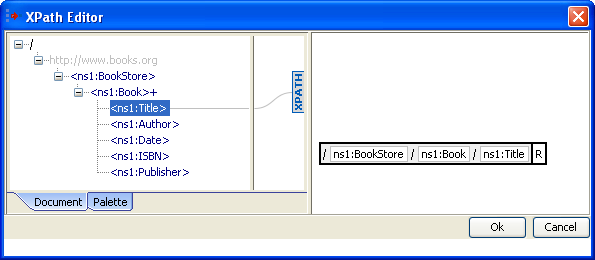
Figure 6466: XPath Editor
XPath Editor can be used for specifying path expressions to identify nodes in an XML document and for specifying conditions. The list of elements from schema provided are shown in the left panel of the editor. An XPath Editor with sample schema is shown below.
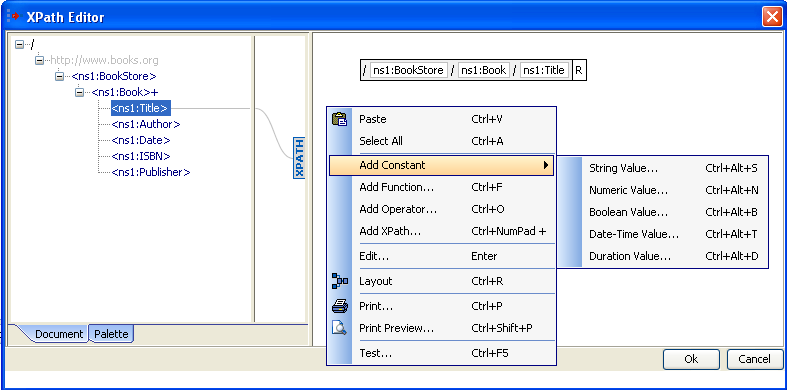
Figure 6567: Adding a constant in XPath Editor
...
A function can be added either by right clicking on the right hand side panel --> Add Function or by selecting from the list available in the palette tab which is present in the left panel as shown below.
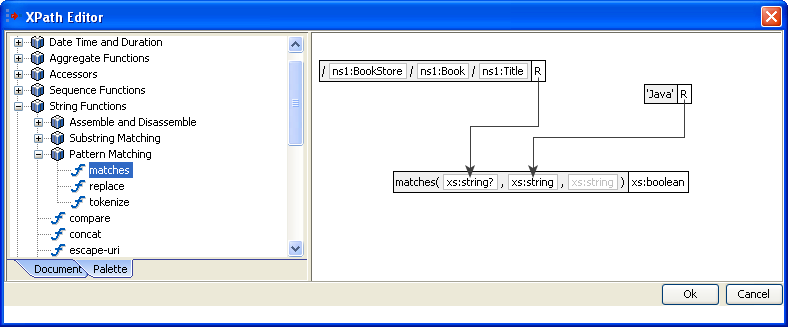
Figure 6668: XPath Editor – Palette containing different XPath functions
...
- Right-click the right panel. Select Add Constant > Boolean Value.
- Select the value as shown below.
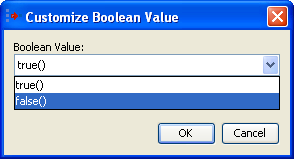
Figure 6769: Adding a boolean constant
Addition an Operator

Figure 6870: Adding an operator
- Right-click the right panel. Click the Add Operator
 button.
button. - Select the operator as shown in the above figure.
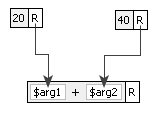
Figure 6971: Add ![]() operator
operator
The figure above illustrates a sample Xpath expression using a '+' operator. It contains two numeric constant values which are passed as arguments to the operator.
...
Named Configurations which are created earlier either from the Configuration Repository view or from the CPS itself can be re-used in other service instances.
To view all the named configurations of a particular service or resource type, use the drop-down in named configurations editor present in the CPS. A list of all configurations of similar type present in the repository is shown. Select a configuration name from the list to use that named configuration in a given service instance.
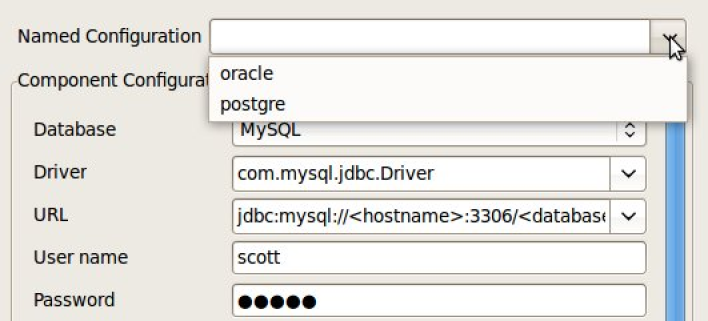
Figure 7072: Load Named Configuration
After selecting the named configuration from drop down, the UI will be disabled and will not be able to edit the configuration.
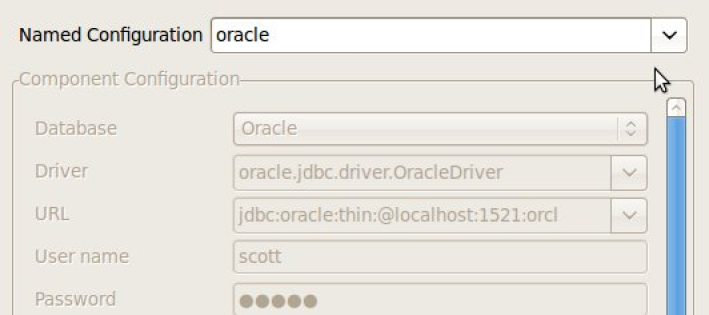
Figure 7173: UI disabled after loading Named Configuration
...
Click Save and Close button or Finish button in the CPS to save the named configuration to the repository.
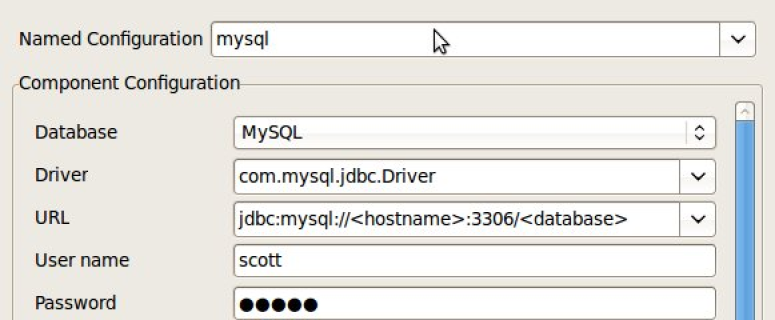
Figure 7274: Save Named Configuration
...
- In eStudio, navigate to Configuration Repository View and right-click the Resource button. Select Add Configuration to open the window for adding new Resource Configuration. Select the Resource type as MessageEncryptionConfiguration as shown in the figure below and click Next.
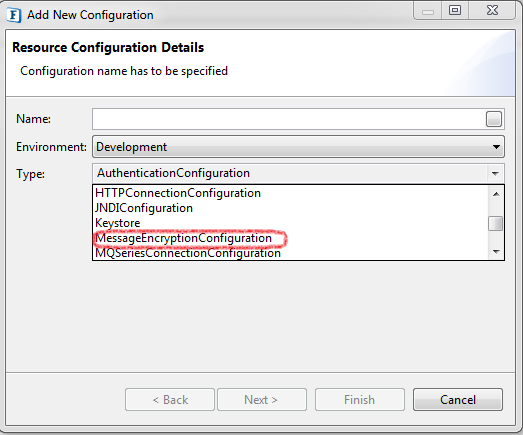
Figure 7375: Add Resource Configuration - Provide the encryption key password (any string) and XML Block Encryption Algorithm as below and click Finish. Supported XML Block Encryption Algorithms are AES128, AES256, TRIPLEDES.
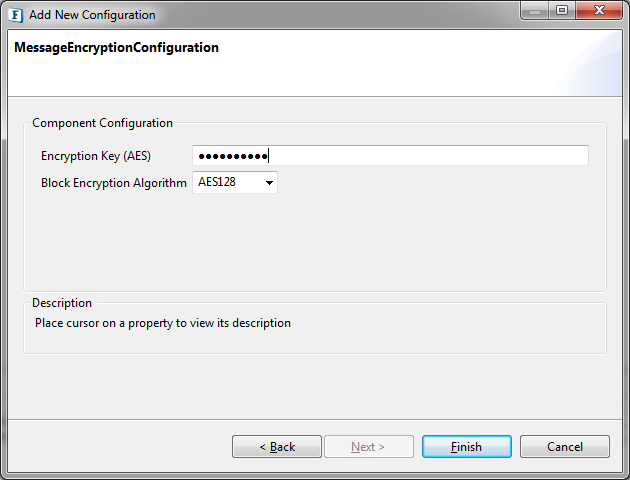
Figure 7476: Provide Encryption Key and Algorithm
...
In the component CPS, which have single input and output ports, the configuration will be as below.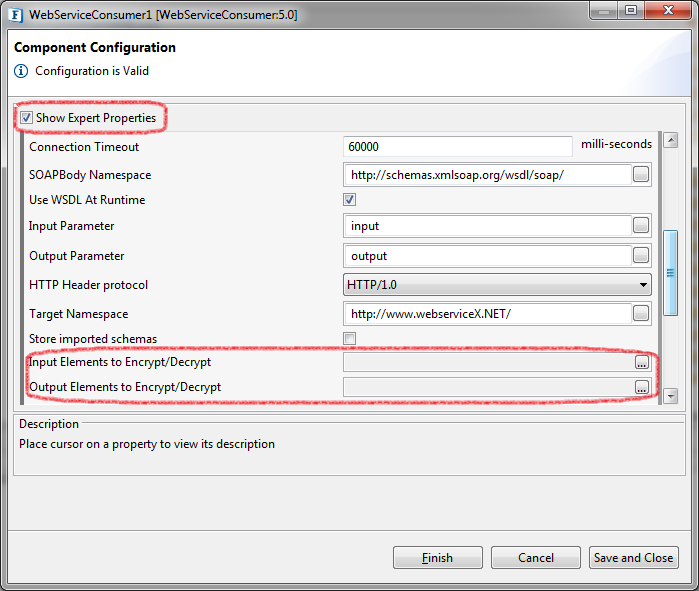
Figure 7577: Encrypt/Decrypt properties in CPS
Enable Show Expert Properties to see properties Input Elements to Encrypt/Decrypt and Output Elements to Encrypt/Decrypt. Both have similar configurations.
Open the Property Editor by clicking on ellipsis  button to select XML elements.
button to select XML elements.
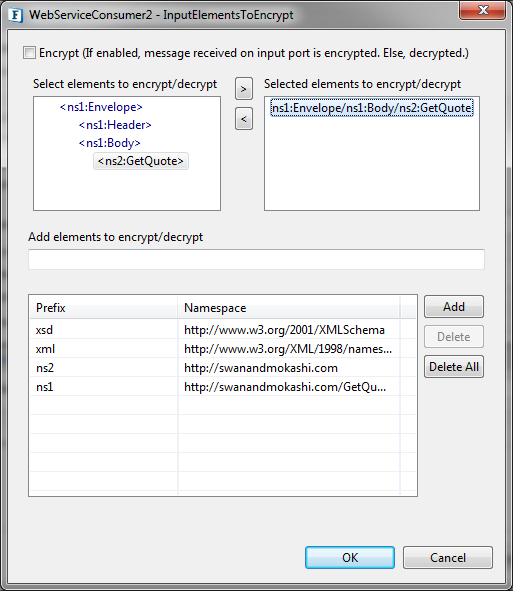
Figure 7678: Select elements to encrypt/decrypt
...
Navigate to Encrypt/Decrypt Configuration and click Refresh to populate the ports of the component.
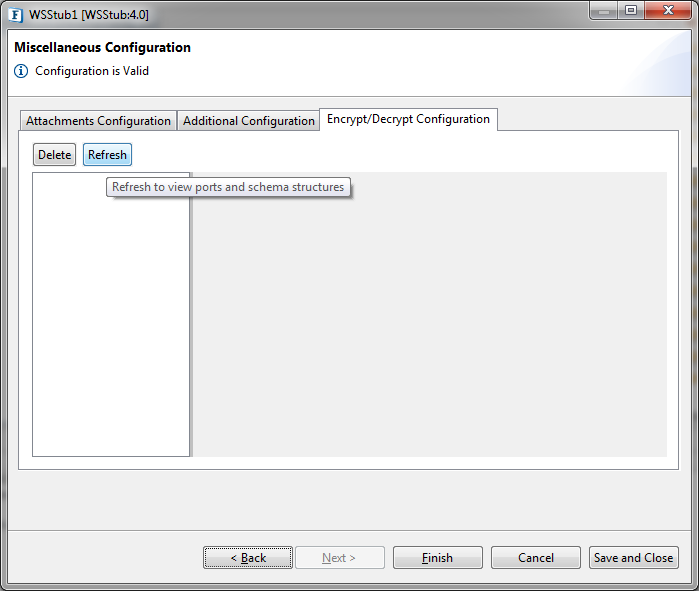
Figure 7779: Components with multiple ports
Select the required port to populate schema structure. The rest of the configuration is the same as above.
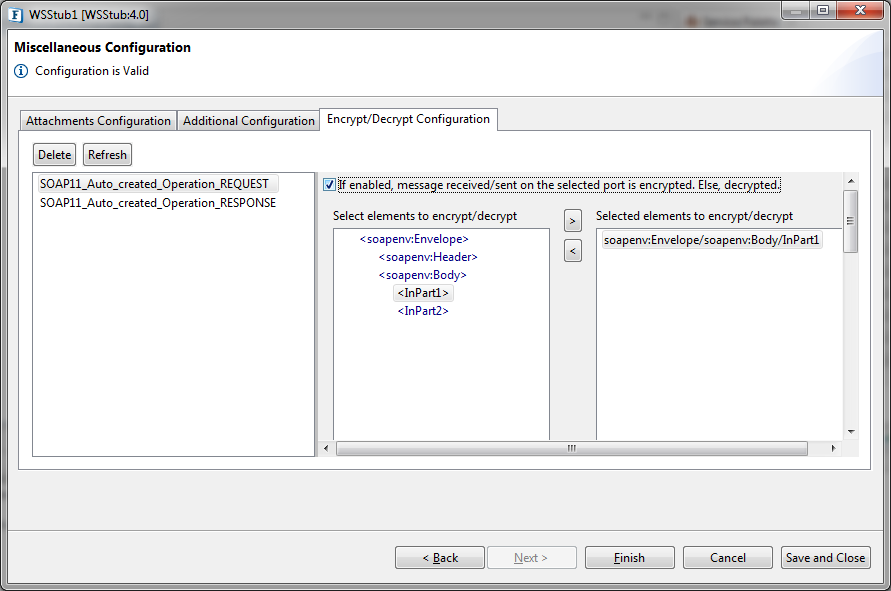
Figure 7880: Select elements for each port
...
- Create an Event Process with Feeder and Display.
- Configure Feeder with a schema. In the next page, select Encrypt Configuration tab and select XML elements to encrypt as described above.
- Adding MessageEncryptionConfiguration in Configuration Repository view is mandatory before launching the component.
- Launch the event process and send a message from Feeder to Display.
- A sample message received by Display where OutPart1 element is encrypted can be as below.
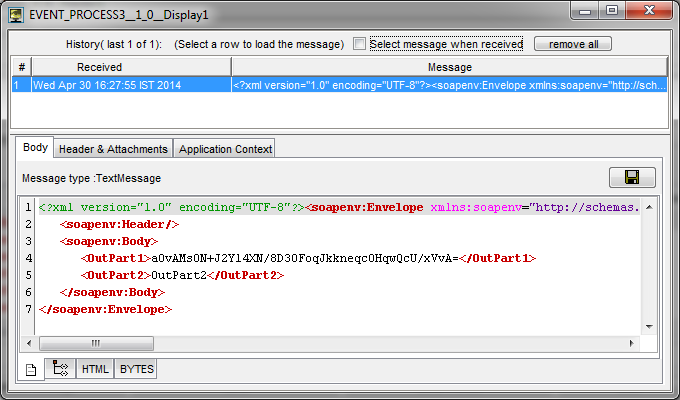
Figure 7981: Sample encrypted message
...
- In eStudio, open Configuration Repository panel and right-click Resource. Click Add Configuration to add new Resource Configuration. Select the Resource type as "Keystore" as shown below.
Gallery sort name include CommonConfig_KeyStoreConfig_3.png, CommonConfig_KeyStoreConfig_2.png, CommonConfig_KeyStoreConfig_1.png
Figure 80: Adding Resource Configuration - Click Next to get the add AES Encryption Key. Enter any String of your choice (recommended minimum of 6 characters for better security) and click Finish to save the keystore which will be used as the key for encryption/decryption of data.
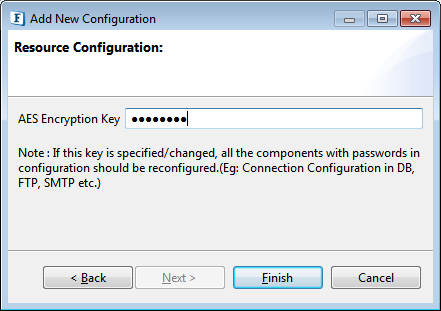
Figure 8182: Adding Encryption Key
| Anchor | ||||
|---|---|---|---|---|
|
Components in Fiorano Event Processes contain passwords of External Systems like Databases, FTP Servers as part of their configuration. Using this feature, users can use their own keys and algorithms to encrypt passwords.
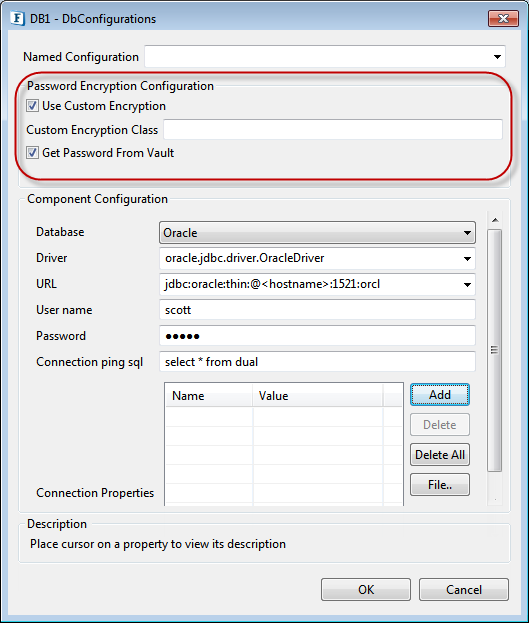
Figure 8283: DB Configuration dialog box
...
